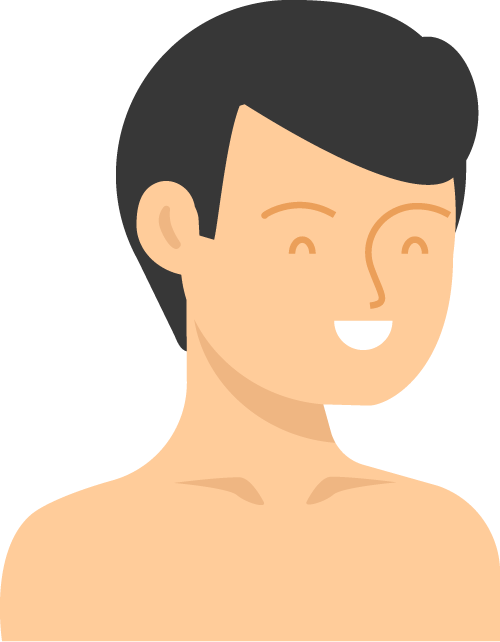


Alopecia, the medical term for hair loss, encompasses a range of conditions that can affect individuals of all ages and genders. While it is commonly associated with the loss of scalp hair, there are several distinct types of alopecia, each with its unique characteristics and underlying causes.
This page will provide an overview of some of the most prevalent types of alopecia, shedding light on their distinguishing features and the factors that contribute to their development. Whether you're grappling with hair loss yourself or seeking a better understanding of this complex phenomenon, delving into the diverse types of alopecia can offer valuable insights into the condition and its management.

Alopecia, the condition characterized by hair loss, is not a one-size-fits-all issue. In fact, there are various types of alopecia, each with its own distinct causes, patterns, and effects.
Understanding these different types is essential for proper diagnosis and treatment, as the approach to managing hair loss can vary significantly depending on the specific form of alopecia in question.

Delving into the diverse types of alopecia can offer valuable insights into the condition and its management.
Delving into the diverse types of alopecia can offer valuable insights into the condition and its management.
Delving into the diverse types of alopecia can offer valuable insights into the condition and its management.









To ensure a natural appearance, at Hair Medical Restoration we do not work with fixed prices given the fact that the grafting process depends on the severity of the hair loss and the patient's facial characteristics.
On average the cost for hair transplant surgery in the United States are starting at $7,450 USD for at least 1,000 grafts. The average cost per graft is between $4 and $8 USD.
Meanwhile in Mexico the average cost for hair transplant surgery starts at $2,990 USD for 1,000 grafts. The average cost per graft is between $2.3 and $3 USD.
Keep in mind these are estimates for hair transplant, not an actual quote. The first step to provide you with a quote is by filling out a virtual consultation, in which our medical staff will go over your information and recommend which hair loss treatment(s) will give you the result you want.
Remember that a graft is equal to a follicular unit.
It's important to note that the full results of a hair transplant may not be visible for several months.
It's important to note that the full results of a hair transplant may not be visible for several months.
It's important to note that the full results of a hair transplant may not be visible for several months.
Reserve an appointment for hair transplant consultation, and learn how much you can save on your hair transplant cost compared to the prices of United States based hair clinics.

Hair follicles are small structures located in the skin that produce hair. Each follicle contains a sebaceous gland, which secretes oil to keep the hair and skin moisturized, and an arrector pili muscle, which contracts to make the hair stand upright (commonly known as goosebumps). A hair graft, on the other hand, refers to a group of one or more hair follicles that are surgically removed from one part of the body (usually the back or sides of the scalp, known as the donor area) and transplanted to another area where hair is thinning or balding. Hair grafts are essential in hair restoration procedures. Each graft can contain between 1 to 4 follicles, depending on the natural grouping of hairs in the donor area.
Yes, FUE (Follicular Unit Extraction) hair transplants are safe in Mexico when performed by qualified professionals. At HMR, we have specialist doctors who are highly trained and have over 10 years of experience in performing FUE procedures. We also use state-of-the-art technology to ensure precision and safety throughout the process. Our team follows strict medical protocols to provide excellent care and minimize risks, making Mexico a popular destination for affordable, high-quality hair restoration treatments.
Like any surgical procedure, FUE hair transplants come with some risks. The most common risk is infection at the donor or recipient site. However, at HMR, we take proactive measures to prevent this by providing patients with prophylactic antibiotics before and after the procedure. Other potential risks include temporary swelling, minor scarring, or shock loss (temporary shedding of transplanted or surrounding hairs), but these are rare and typically resolve with time. Our team will guide you through proper aftercare to minimize any complications.
The number of follicles needed depends on the extent of your hair loss and your desired results. There are two ways to determine this:
This ensures that we tailor the procedure to meet your specific needs.
The design of your new hairline is one of the most critical aspects of a successful transplant. On the day of your procedure, the doctor will personally create a custom design based on your facial structure, age, natural hairline pattern, and personal preferences. The goal is to achieve a natural-looking result that complements your appearance while meeting your expectations.
To determine if you’re a good candidate for a hair transplant, we recommend scheduling a consultation with one of our specialists. Generally, good candidates:
During your consultation, the doctor will evaluate factors such as your degree of hair loss, scalp condition, and medical history to determine if FUE is right for you.
Yes, you can go outside after your transplant; however, it’s important to take precautions to protect your scalp during the healing process:
These measures help protect the newly transplanted follicles and ensure optimal healing.
At HMR, only licensed doctors perform both the extraction of grafts from the donor area and their implantation into the recipient area. Nurses assist during the procedure but do not handle critical steps like extraction or implantation. This ensures precision and professionalism throughout every stage of your treatment.
FUE (Follicular Unit Extraction) offers several advantages over FUT (Follicular Unit Transplantation):
These benefits make FUE an increasingly popular choice for patients seeking natural-looking results with minimal downtime.
Your doctor will provide personalized guidelines based on your lifestyle.
We monitor your progress closely for one year after your procedure. To ensure everything is healing properly and progressing as expected, we’ll ask you to send us photos on these dates:
This follow-up schedule allows us to track your results over time and address any concerns promptly.
After your FUE procedure:
We understand many patients travel from faraway locations like NYC or Florida and may not always be able to visit us in person regularly. That’s why we maintain open communication throughout your recovery journey via email or phone to answer any questions or concerns you may have.